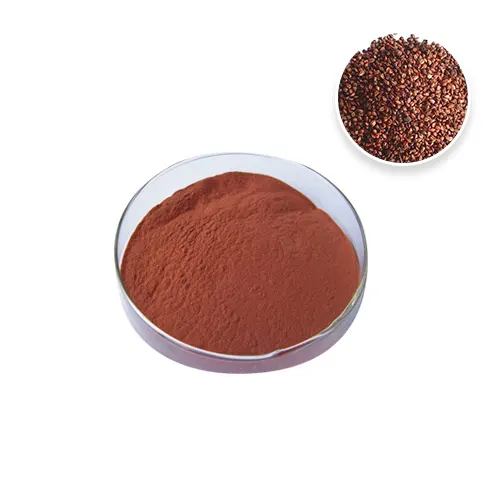Introduction To NMN (Nicotinamide Mononucleotide)
2023-08-12 14:22:53
The full name of NMN is nicotinamide mononucleotide, which is nicotinamide mononucleotide, which is a naturally occurring biologically active nucleotide. NMN has two irregular forms, α and β; the β isomer is the active form of NMN, and its molecular weight It is 334.221 g/mol.
Figure: Chemical structural formula and ball-and-stick model of NMN
Table: Chemical classification of NMN
Physical and chemical properties of NMN
Data from PUBCHEM
Food Sources of NMN
NMN is widely distributed in daily food, vegetables such as cauliflower (0.25–1.12 mg NMN/100 gm) and Chinese cabbage (0.0–0.90 mg NMN/100 gm), fruits such as avocado (0.36–1.60 mg NMN/100 gm), Tomatoes (0.26–0.30 mg NMN/100 gm), meat such as raw beef (0.06–0.42 mg NMN/100 gm) are rich in NMN[1].
Endogenous synthesis of NMN
One molecule of nicotinamide and one molecule of 5-phosphoribosyl-1-pyrophosphate (PRPP) are catalyzed by nicotinamide phosphoribosyltransferase (NAMPT or NAMPRT) to generate one molecule of NMN and one molecule of pyrophosphate (PPi). In addition to nicotinamide, NMN can be generated, and one molecule of nicotinamide riboside (NR) is phosphorylated under the catalysis of nicotinamide riboside kinase (NRK) to generate one molecule of NMN.
Tissue specificity of NMN synthetase, consuming enzyme
(1) NAMPT: NAMPT is ubiquitous in the body, but there are large differences in expression levels among tissues. In the brain and heart, the NAMPT-dependent salvage pathway is the preferred mode of NAD+ production; while in skeletal muscle, the NRK-dependent salvage pathway is the preferred mode of NAD+ production.
(2) NMNATs (NMN-consuming enzymes): Mouse tissue metabolic profiling showed that the activity of NMNAT subtypes was much higher than that of NAMPT, and the activity of NMNAT subtypes was not restricted in most tissues except blood.
(3) NRKs: Expression analysis of NRK subtypes showed that NRK1 is ubiquitous, while NRK2 is mainly present in skeletal muscle. Consistent with this, chronic NR supplementation caused increased NAD+ levels in muscle but had little effect in brain or white adipose tissue [2].
NMN uptake
Different pathways for NMN to enter cells
NMN has a membrane transporter on the surface of some cells, which can directly transfer NMN into the cell, so there are two ways for NMN to enter the cell:
① Direct entry into cells through transporters: In early 2019, a paper by nature metabolism confirmed this idea. The article found that there is an NMN-specific transporter in the small intestine of mice, called Slc12a8, which is an amino acid and polyamine transporter. It has high selectivity to NMN and does not transport NaMN, which is very similar in structure to NMN[3].
② Dephosphorylation of CD73 on the cell membrane surface to NR (through the balance nucleoside transporter ENTs) into the cell, and then catalyzed by the NRK enzyme in the cytoplasm to NMN, enters the mitochondria and is utilized (mitochondrion without NRK) [4].
NAM is not only the precursor of NMN, but also the product of NAD+ hydrolyzed by CD38, which is depleted by NADase activity. Therefore, the synthesis, utilization and regeneration of NAD+ is a cycle involving intracellular and extracellular NMN/NR→NAD+→NAM→NMN.
The promotion of NAD+ by oral NMN
NMN is the precursor of NAD+, and its function is mainly reflected by NAD+ (nicotinamide adenine dinucleotide).
In the salvage synthesis pathway, nicotinamide riboside (NR) or nicotinamide (NAM) synthesizes nicotinamide mononucleotide (NMN) through NRK (nicotinamide riboside kinase) or NAMPT, NMNAT, and NMN synthesizes NAD+ through NMNAT1-3 enzymes .
PNP: purine nucleoside phosphorylase; NRK: nicotinamide riboside kinase; QPRT: quinolinic acid phosphoribosyltransferase NAPRT: nicotinic acid phosphoribosyltransferase; NAMPT: nicotinamide phosphoribosyltransferase; NMNAT: nicotinamide mononuclear adenylate adenylyltransferase
Although the complete structure of NMN cannot be detected in the serum, oral administration of NMN can still quickly (15min) increase the NAD+ levels of female and male mice[5]:
Liver, pancreas, white adipose tissue NMN, NAD+ levels
The role of NMN
NMN mainly plays a role by converting into NAD+. NAD+ is also known as coenzyme I, and its full name is nicotinamide adenine dinucleotide. It is widely distributed in all cells of the human body and participates in thousands of biocatalytic reactions. It is an essential coenzyme in the human body. .
Declining NAD+ during aging is considered a major cause of disease and disability, such as hearing and vision loss, cognitive and motor dysfunction, immune deficiency, arthritis due to dysregulated autoimmune inflammatory responses, metabolic disorders, and cardiovascular disease.
Therefore, NMN supplementation increases NAD+ content in the body, thereby delaying, improving, and preventing various aging-related phenotypes, or age-induced metabolic disorders and senile diseases.
A. NAD+ and circadian rhythm
The NAD+-dependent deacetylase SIRT1 acts as a bridge between circadian rhythm and metabolism by linking the enzymatic feedback loop regulating the NAD+ salvage pathway and the circadian transcription-translation feedback loop.
NAD+ regulates the biological clock through SIRT1. SIRT1 deacetylates BMAL1 and PER2, which is antagonistic to the acetylation function of CLOCK, so SIRT1 can inhibit the transcription of clock genes mediated by CLOCK-BMAL1. Therefore, NAD+ affects the deacetylation activity of SIRT1 through its own level, which in turn affects the expression of a series of circadian clock-related proteins including NAMPT [6].
Biological clock regulation is associated with many diseases, including but not limited to sleep disorders, diabetes, and tumors. Many pathological processes are triggered by circadian clock disturbances, which may come from genetics or the environment. All in all, keeping the circadian clock working normally plays an important role in maintaining health.
B. NAD+ and nervous system
Sirtuins are nicotinamide adenine dinucleotide (NAD+)-dependent deacylases traditionally associated with caloric restriction and aging in mammals. These proteins also play an important role in maintaining the health of neurons during.







